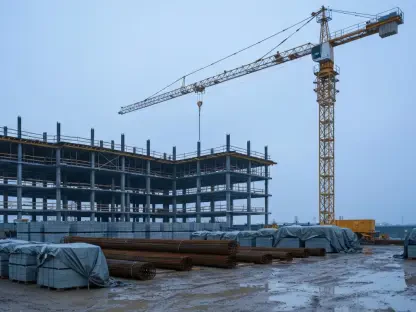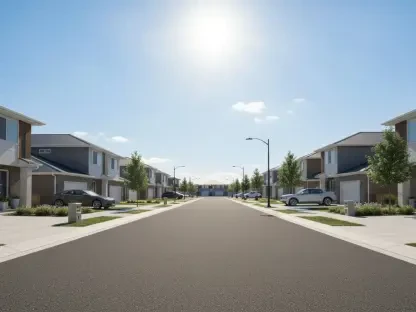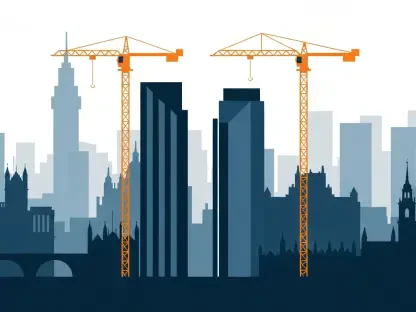Australia is at the forefront of global sustainability efforts, driven by the proactive measures of its State and Territory governments. These initiatives focus on reducing emissions, fostering innovation, and promoting sustainable productivity in the built environment. The collaborative efforts aim to position Australia as a leader in the transition towards decarbonization and sustainable development.
The “Every Building Counts” Policy Platform
A key initiative is the “Every Building Counts” policy platform by the Green Building Council of Australia and the Property Council of Australia. Released in 2023, this policy report encompasses 40 recommendations across eight themes to advance Australia’s decarbonization goals. The built environment, accounting for over 50% of the nation’s electricity consumption and nearly 25% of its emissions, is highlighted as a critical sector for implementing sustainability practices.
The recommendations outlined in the report include measures to improve energy efficiency, enhance building standards, and promote renewable energy adoption. The emphasis is on high-impact, cost-effective solutions that can be adopted across various types of buildings, from residential to commercial and government structures. By focusing on these areas, the policy aims to make a significant contribution to Australia’s overall emission reduction targets, demonstrating the potential of the property sector to lead in sustainable practices.
South Australia’s Circular Economy Vision
South Australia is making strides towards a circular economy in the built environment. The state has partnered with Green Industries SA to develop an “Action Plan” aimed at transitioning to a circular model. This plan seeks to minimize waste, promote recycling, and foster sustainable practices throughout the construction and building lifecycle. A key project embodying this vision is Nightingale Bowden, a development focused on social and environmental sustainability.
Nightingale Bowden is a collaborative effort involving Housing Choices South Australia, the South Australian Housing Authority, Renewal SA, and Nightingale Housing. This project aims to create a community that integrates social housing with sustainable building practices. The development emphasizes efficient use of resources, reduced waste, and the incorporation of renewable energy solutions. By pursuing these goals, South Australia is setting a standard for circular economic models in the built environment, demonstrating the viability of such approaches in achieving long-term sustainability.
Queensland’s Sustainable Healthcare Leadership
Queensland demonstrates its sustainability commitment through the Surgical Treatment and Rehabilitation Service (STARS). This 182-bed hospital has achieved a 5 Star Green Star Performance certification due to its excellence in waste management, energy and water efficiency, and thermal optimization. The hospital also prioritizes the protection of surrounding ecologically sensitive areas, setting a benchmark in sustainable healthcare infrastructure.
The STARS facility is designed to maximize energy efficiency through advanced technologies and sustainable practices. For example, the hospital employs innovative waste management systems that significantly reduce its environmental footprint. Energy-saving measures include the use of renewable energy sources and efficient water management techniques. The focus on thermal optimization ensures that the building maintains ideal temperatures with minimal energy use, contributing to overall sustainability. This achievement underscores Queensland’s leadership in sustainable healthcare infrastructure, providing a model for future projects in the sector.
New South Wales’ Consumer and Energy Strategy
New South Wales showcases comprehensive efforts to reduce energy costs and promote sustainability with the “NSW Consumer and Energy Strategy.” Supported by $290 million in new funding, this strategy includes 50 actions to help households and small businesses reduce energy bills and adopt energy-saving technologies. Initiatives like the Home Energy Saver program and new home energy ratings play key roles in facilitating these goals.
The strategy aims to make energy efficiency accessible and affordable for all residents of NSW. One of the notable initiatives, the Home Energy Saver program, provides incentives and support for households to implement energy-saving measures. Additionally, new home energy ratings help renters and buyers make informed decisions based on the energy efficiency of properties. By encouraging widespread adoption of solar panels and battery systems, NSW is set to become a leader in sustainable energy practices. The ambitious target is that nearly 1.5 million households and businesses will have access to these technologies by 2050, significantly contributing to the state’s decarbonization efforts.
Australian Capital Territory’s Sustainable Buildings Pathway
In the Australian Capital Territory, the “Sustainable Buildings Pathway” outlines a ten-year strategy for advancing environmentally sustainable and climate-resilient buildings. This plan aligns with the ACT’s net zero emissions target for 2045, involving stakeholders across various sectors. Ginninderry, spanning across ACT and NSW, exemplifies this commitment as one of Australia’s first 6 Star Green Star communities.
The Sustainable Buildings Pathway focuses on creating clear guidance and supportive policies for developing environmentally friendly structures. It incorporates input from the building and construction industry, government, and the broader community to ensure a comprehensive approach. Ginninderry represents a pinnacle of this strategy, showcasing innovative design, sustainable materials, and renewable energy integration. The development demonstrates how forward-thinking planning can achieve both social and environmental objectives, setting an example for future communities across Australia.
Victoria’s Gas Substitution Roadmap
Victoria has implemented the Gas Substitution Roadmap to transition toward net zero emissions by 2050. This roadmap promotes sustainable energy solutions and, from January 2024, mandates that new homes requiring planning permits be all-electric, eliminating new gas connections. This bold policy underscores Victoria’s dedication to innovative energy practices.
The Gas Substitution Roadmap encourages the adoption of renewable energy technologies and energy-efficient appliances in residential and commercial buildings. By requiring new homes to be all-electric, Victoria aims to reduce dependence on fossil fuels and lower greenhouse gas emissions. This initiative is complemented by efforts to develop infrastructure that supports electric energy supply and distribution, ensuring that the transition is seamless for residents and businesses. The roadmap’s policies reflect a strong commitment to environmental sustainability and set a precedent for other regions to follow.
Western Australia’s Sectoral Emissions Reduction Strategy
Western Australia leads with its Sectoral Emissions Reduction Strategy (SERS), the first of its kind in Australia. This strategy lays the groundwork for the state’s net zero emissions goal by 2050. SERS includes the introduction of Sustainable Design Guidelines for new and upgraded non-residential government buildings and aims for Green Star 4 Star ratings for new government constructions, showcasing a commitment to sustainability.
The approach involves setting clear standards for sustainable building practices across various sectors. The Sustainable Design Guidelines emphasize energy efficiency, water conservation, and the use of environmentally friendly materials in construction projects. By striving for Green Star ratings, Western Australia ensures that new government buildings meet high environmental standards, promoting long-term sustainability. These measures are designed to support the state’s broader emission reduction goals, highlighting the importance of integrated policies and practices in achieving net zero targets.
Unified Goals Across States and Territories
Australia is leading the charge in global sustainability efforts, thanks to the proactive strategies implemented by its State and Territory governments. These measures prioritize emission reductions, encourage innovative solutions, and champion sustainable practices within the built environment. The collective goal is to position Australia as a pioneer in the global transition towards decarbonization and sustainable development.
In recent years, Australia has invested heavily in renewable energy sources like wind and solar power, aiming to reduce its reliance on fossil fuels. Various State and Territory governments have rolled out extensive policies to incentivize businesses and households to adopt greener practices. This includes offering subsidies for renewable energy installations and stricter regulations on carbon emissions.
Moreover, research institutions and private sectors are brought into the mix, fostering collaboration to develop and deploy cutting-edge technologies. These efforts are not only about reducing the environmental footprint but also about boosting economic growth through green jobs and sustainable industries. By embracing comprehensive sustainability measures, Australia strives to set an example on the world stage, demonstrating that economic progress and environmental preservation can go hand in hand.









